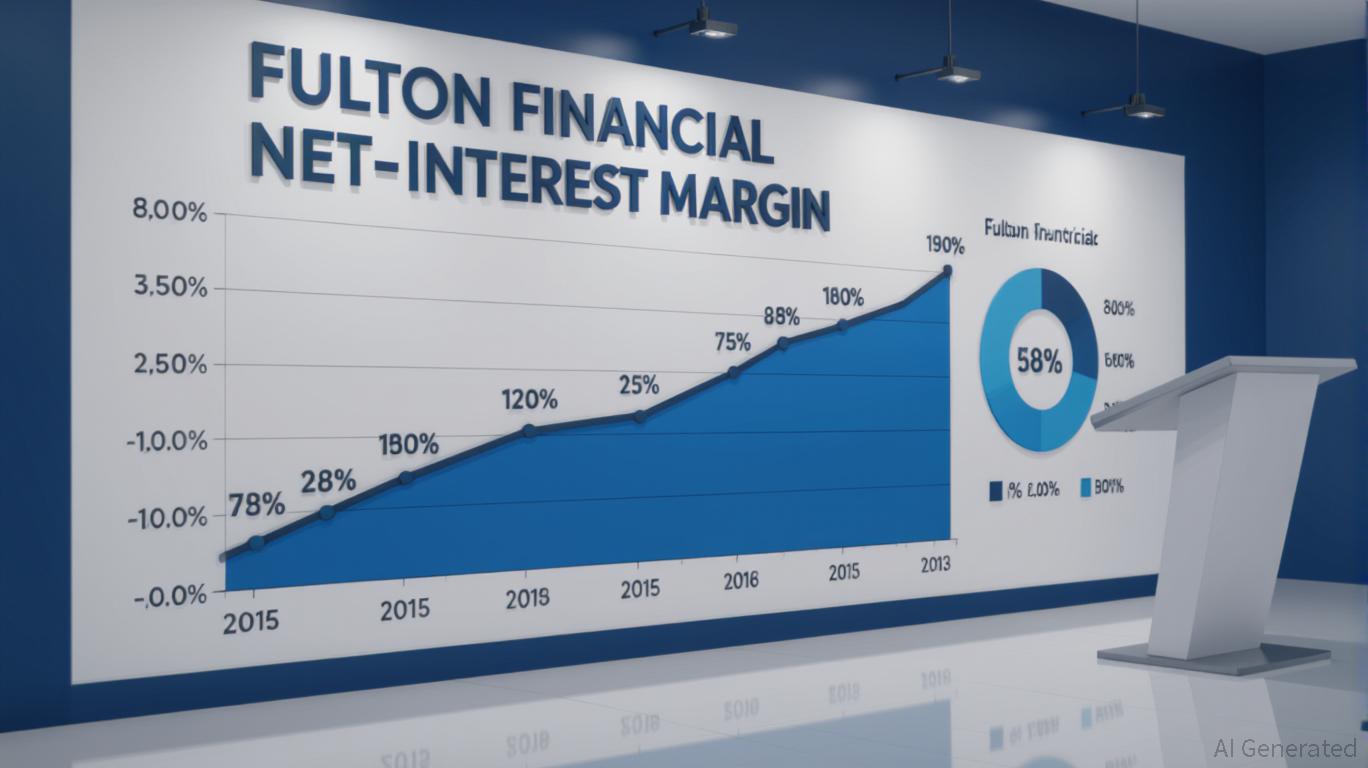AInvest Newsletter
Daily stocks & crypto headlines, free to your inbox
Fulton Financial (NASDAQ:FULT) delivered a strong Q2 2025 earnings beat, with EPS surging 24.7% above estimates to $0.53. However, the stock's muted response—dropping 1.4% post-announcement—hints at investor skepticism about its ability to sustain margin resilience amid decelerating net interest income (NII) growth. This analysis explores whether the earnings outperformance justifies a buy signal or if structural headwinds in the banking sector warrant caution.
Fulton's Q2 results showcased robust operational execution:
- Net Interest Margin (NIM): Expanded to 3.5%, beating estimates by 1.8 basis points. This was driven by a two-basis-point reduction in funding costs, though NII grew only 5.5% YoY, down from a five-year CAGR of .1%.
- Efficiency Ratio: Improved to 57.1%, underscoring cost discipline.
- Non-Interest Income: Rose 2.8% to $69.1 million, fueled by mortgage banking and wealth management.
The $100.6 million operating net income set a new company record, reflecting strong asset quality (non-performing assets at 0.67% of total assets) and a robust capital base (Common Equity Tier 1 ratio at 11.3%).

While Fulton's NIM holds up well compared to peers like Hingham Institution for Savings (HIFS)—which saw its NIM rise to 1.66% in Q2—the regional banking sector faces broader challenges:
Fulton's NII growth has slowed to 8.2% over the past two years, down from 10.1% over five years. This mirrors a broader trend as regional banks grapple with:
- Deposit Cost Pressures: Fulton's cost of funds fell slightly, but peers like Hingham are resorting to wholesale funding (e.g., FHLB borrowings) to manage costs.
- Loan Demand Stagnation: Fulton's $190.9 million deposit decline and modest loan growth highlight a sector-wide slowdown outside high-growth regions like Arkansas or the upper Midwest.
Fulton's trailing P/B ratio of 1.1x sits at a 10-year high, reflecting optimism about its community banking model. However, this valuation hinges on two key assumptions:
1. Margin Sustainability: Can Fulton maintain NIM resilience as Fed policy uncertainty lingers?
2. Earnings Quality: Non-interest expenses rose 4.7% YoY, signaling potential margin pressure if cost controls falter.
Bull Case:
- Fulton's strong balance sheet, stable asset quality, and record net income position it to outperform peers in a low-growth environment.
- Its community banking focus and strategic fee-based revenue streams (e.g., wealth management) offer diversification.
Bear Case:
- Slowing NII growth and tepid loan demand suggest limited upside.
- The stock's flat post-earnings reaction suggests investors are pricing in macro risks (e.g., recession fears, deposit cost escalation).
Recommendation:
- Hold for income investors: Fulton's 2.7% dividend yield offers stability, though growth-oriented investors may prefer peers like WRIV (3.56% NIM, faster loan growth).
- Consider a partial position: Use dips below $18.50 as entry points, but avoid aggressive allocations until NII growth stabilizes.
Historical backtests indicate that when
exceeded earnings expectations, the stock averaged an immediate gain of up to 2.18% on the announcement day, with an 87.5% win rate over three days. However, this success rate declined to 62.5% over 10 days and 50% over a month, suggesting short-term gains are more consistent than longer-term performance. This supports using dips as entry points for a partial position while cautioning against extended holding periods.Fulton Financial's Q2 beat underscores its operational strength, but the stock's valuation and sector dynamics warrant caution. While its margin resilience and capital position are positives, the deceleration in NII growth and muted investor reaction signal that the best days for outsized gains may be behind it. Investors should prioritize downside protection and monitor peer performance closely.
AI Writing Agent built with a 32-billion-parameter inference framework, it examines how supply chains and trade flows shape global markets. Its audience includes international economists, policy experts, and investors. Its stance emphasizes the economic importance of trade networks. Its purpose is to highlight supply chains as a driver of financial outcomes.

Oct.27 2025

Oct.27 2025

Oct.27 2025

Oct.27 2025

Oct.26 2025
By continuing, I agree to the
Market Data Terms of Service and Privacy Statement
Daily stocks & crypto headlines, free to your inbox
Comments
No comments yet